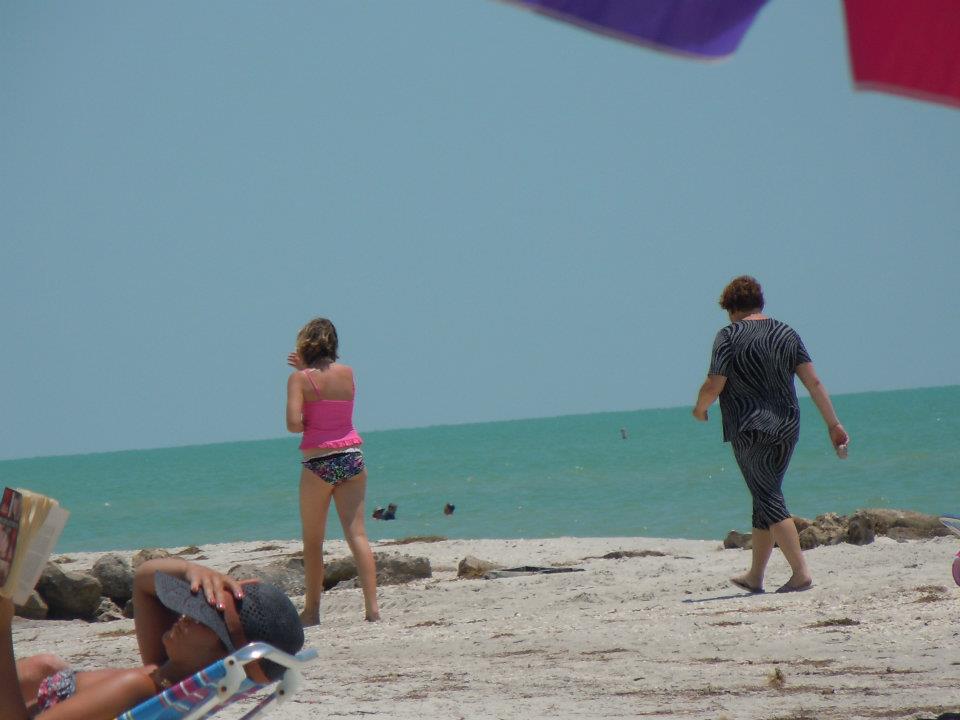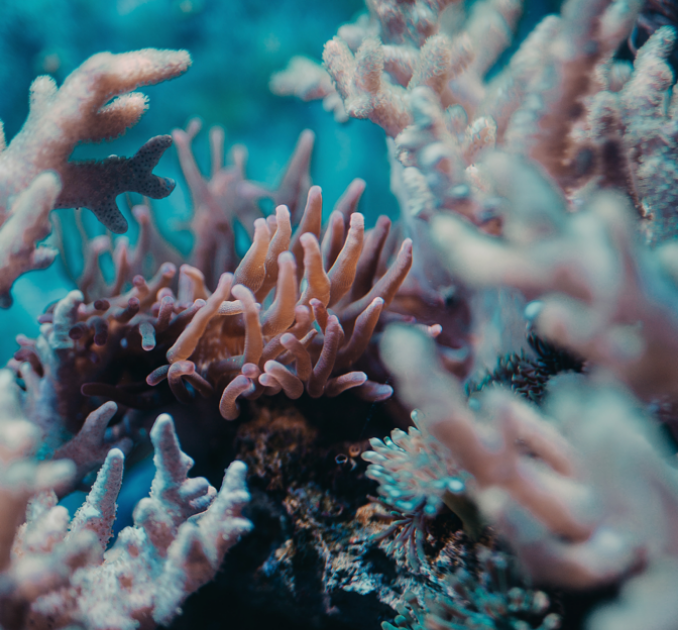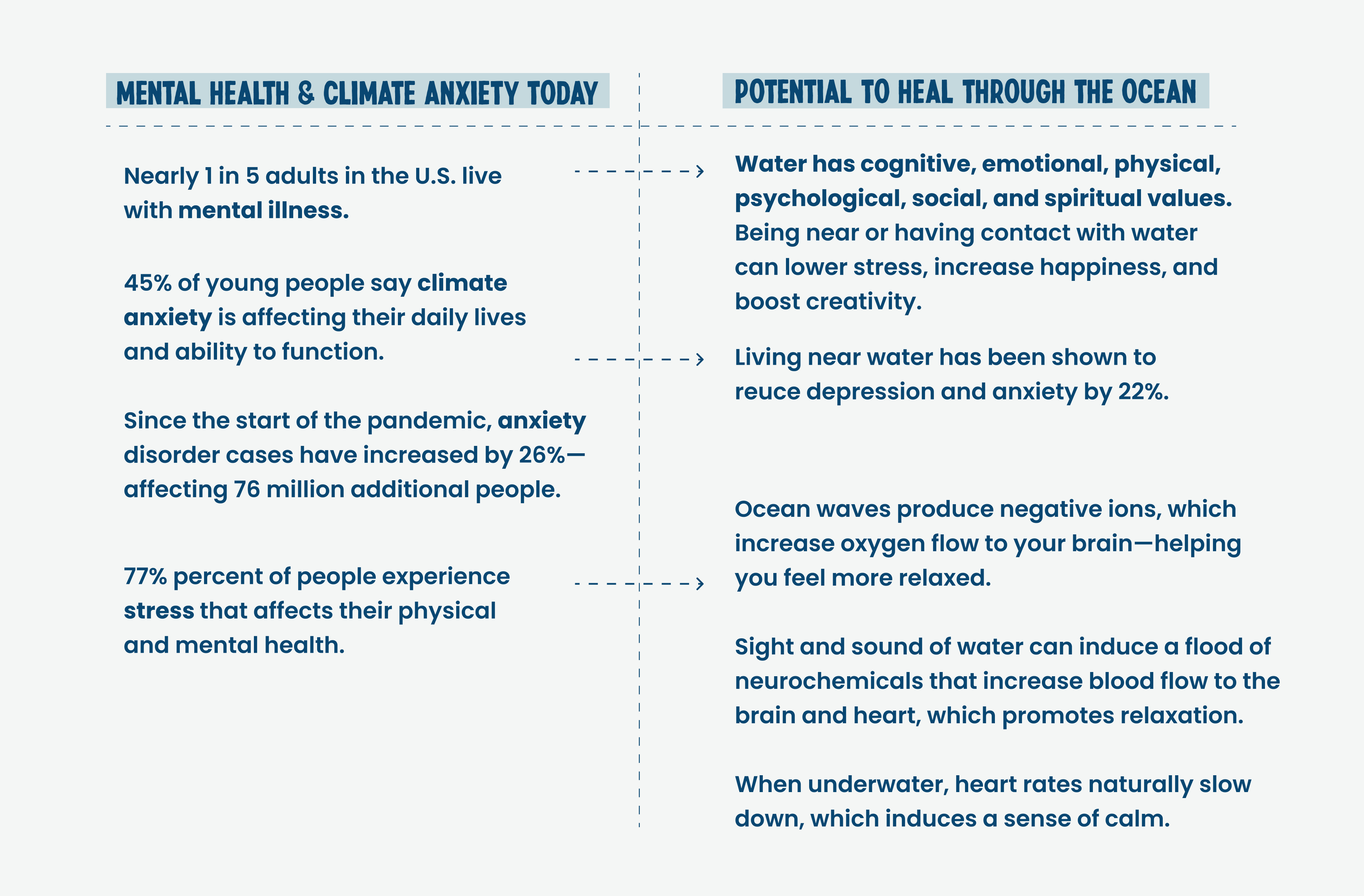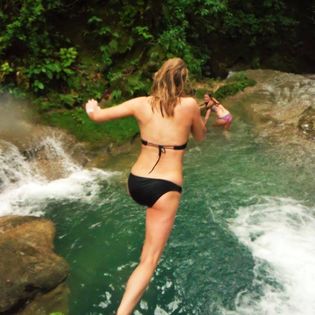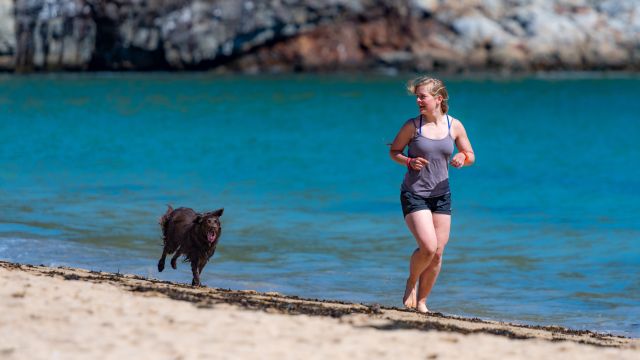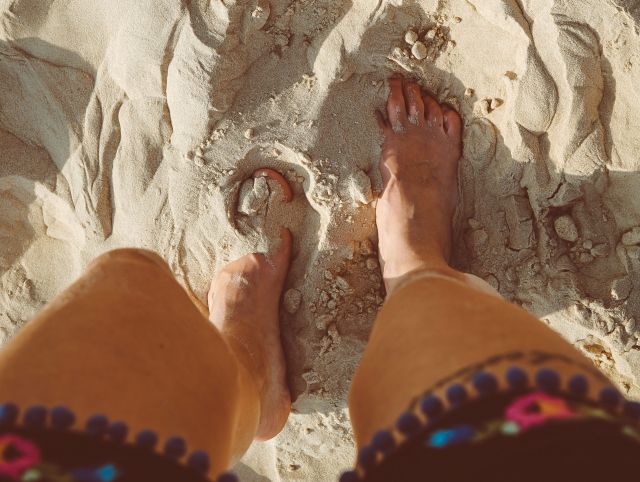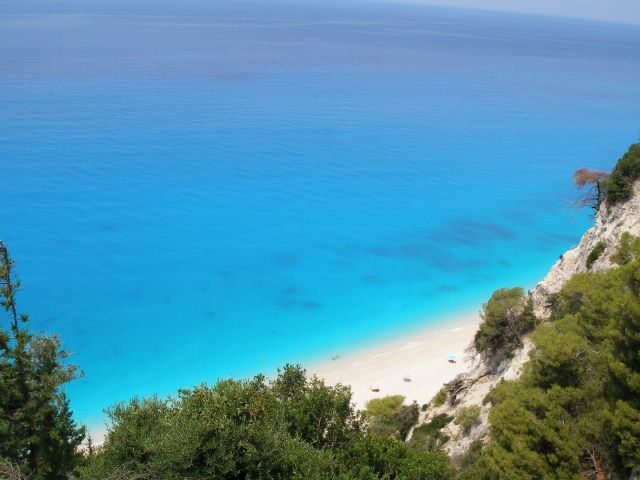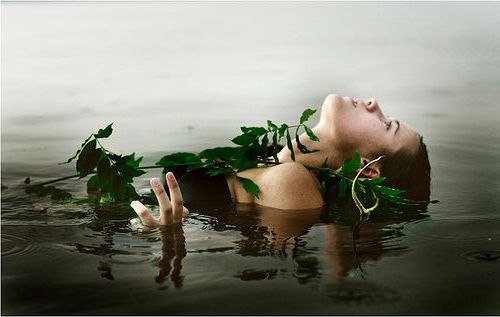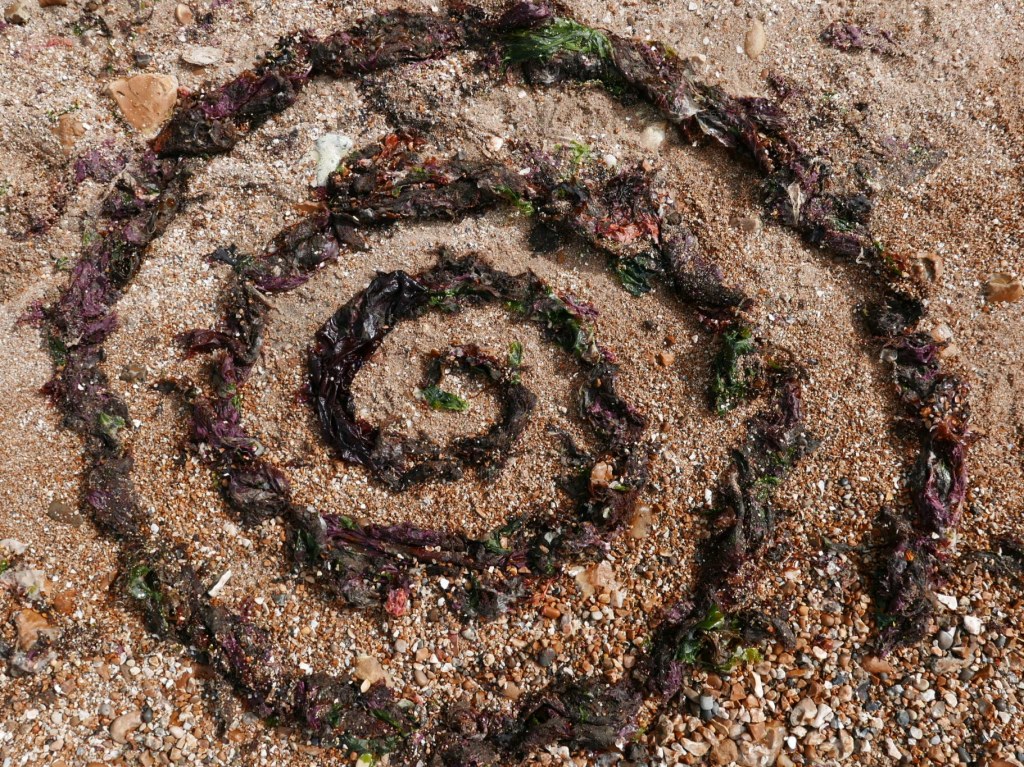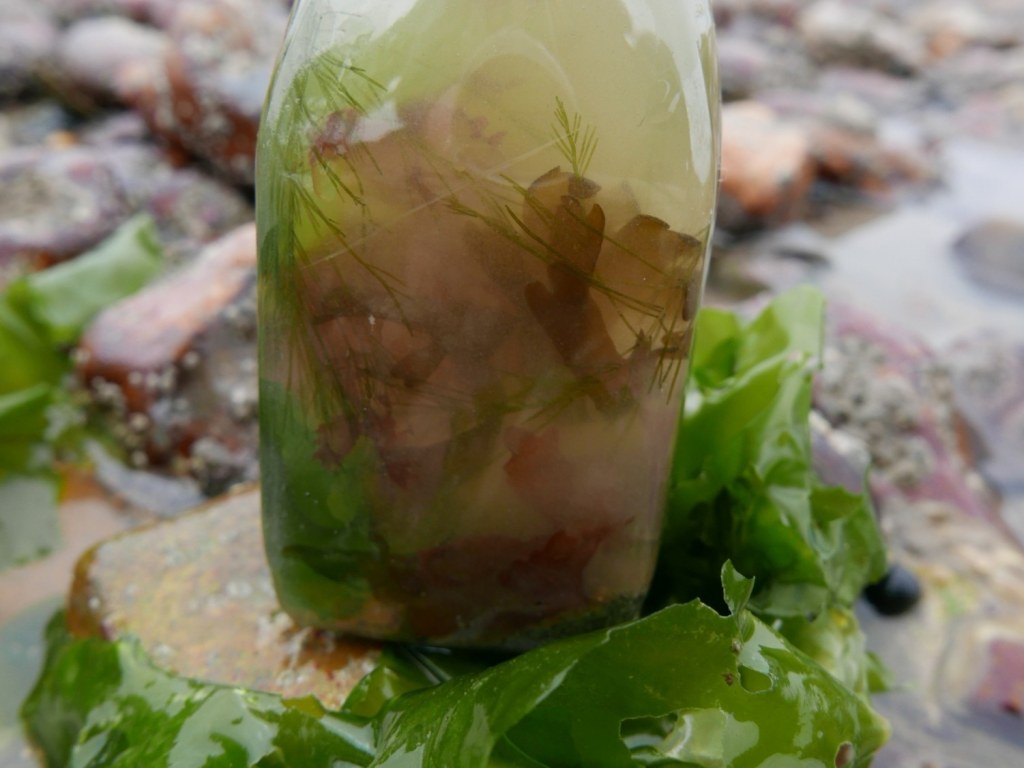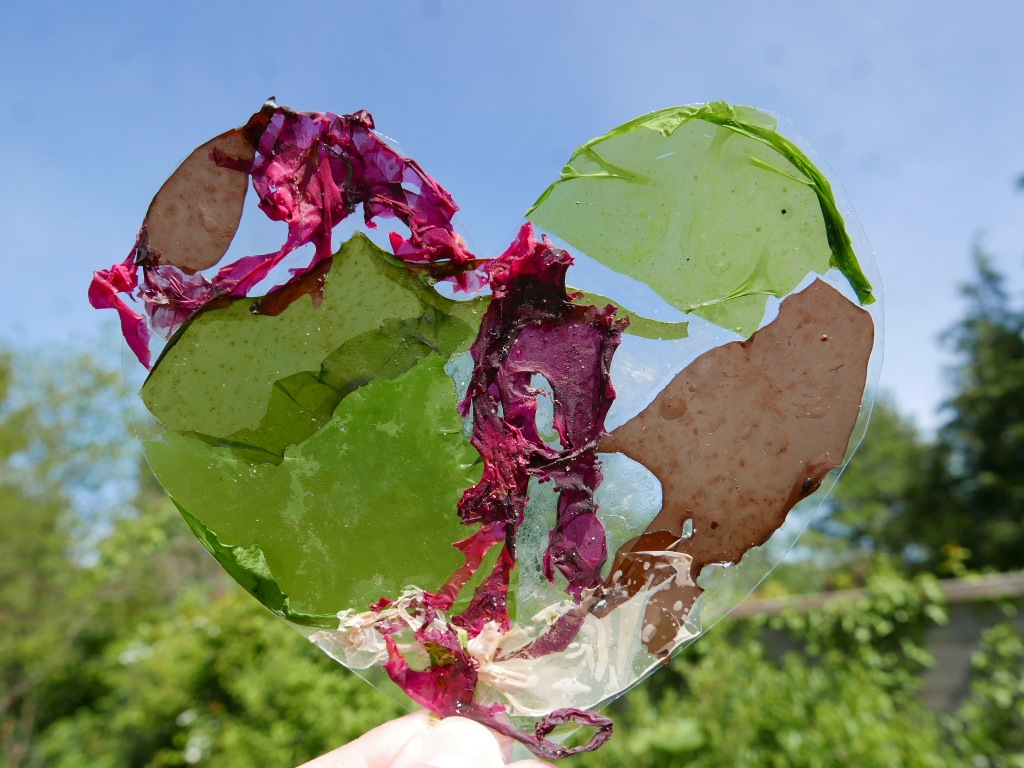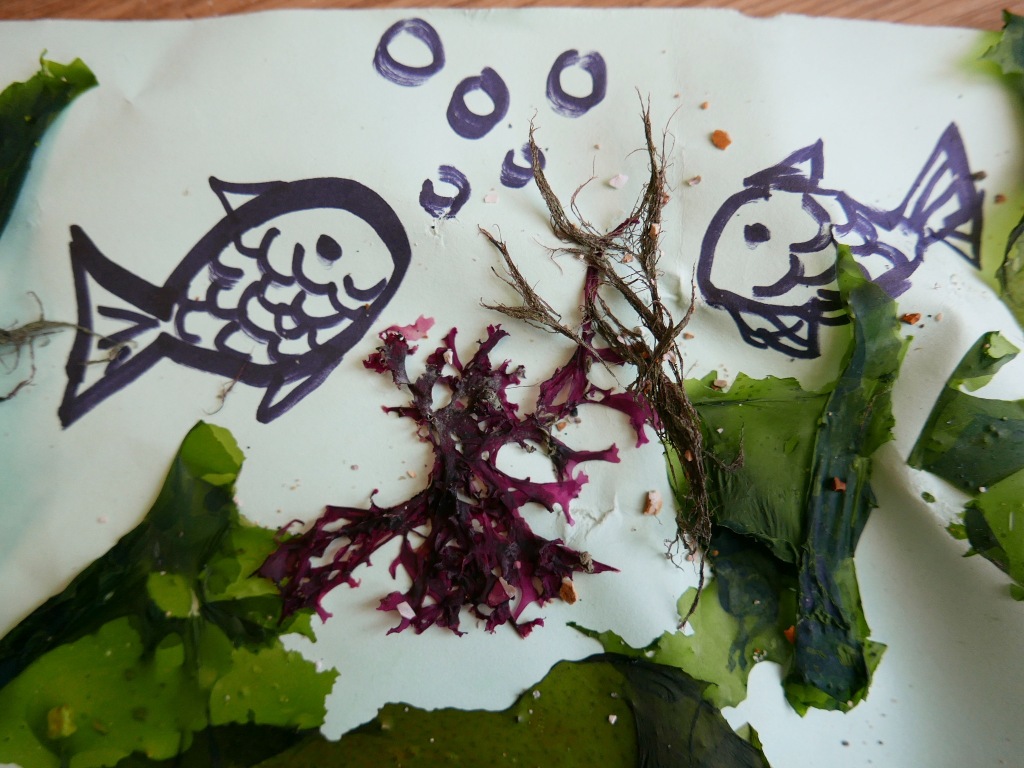Exploring the shoreline

The Beach Sand Maintains and Restores Skin Quality
Walking on fine sand at the beach is just like going for a pedicure. Except it’s free. The sediment will help exfoliate the dead skin off your feet and body, keeping your skin smooth and healthy.
Why The Beach Is Actually Great For Your Health
What The Beach Can Do To Your Brain.
Two Items That Make the Beach More Enjoyable
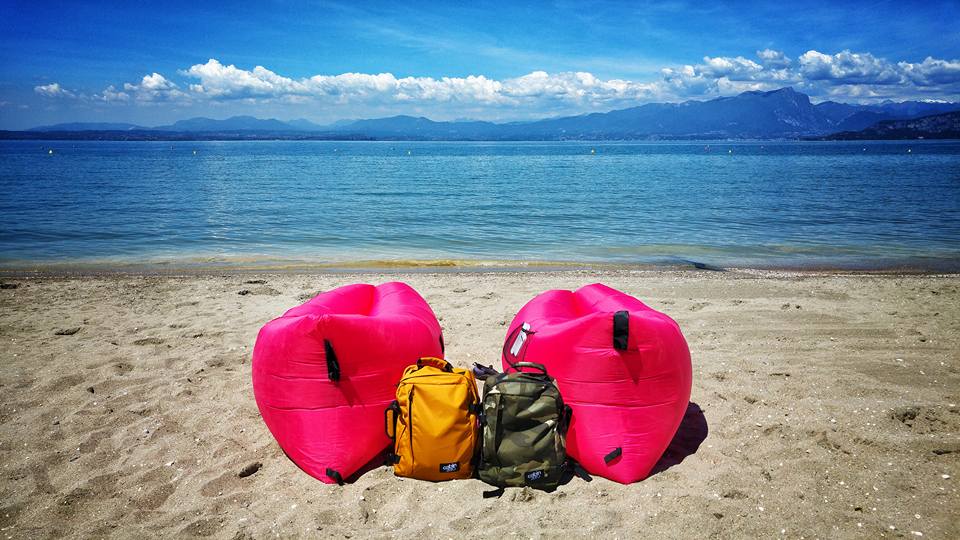
I want to start by saying that these are fantastic but be warned, if you are an introverted bookworm like me, who hates drawing unwanted attention to yourself then you need to have a beach buddy with you. Luckily for me, Paul is happy, or rather I should say whinged at until he inflates both beach bags whenever we use them and therefore, I simply stand back and let others watch as he swills the bags around filling them with air.
Trust me. I know I have now painted an oh-so-not very glamorous picture, these beach bags take very little effort to inflate once you have figured them out and they have to be the most comfortable thing I have ever used.
Just imagine, you no longer have to worry about sand-covered towels or hard sunbeds, these are like a bean-bag without the beans. Plus, the added advantage of one of these is that once you are done you simply empty them of air and roll them back up, placing them back into the small carrying bags that they come in.
This product really is a win-win in my opinion, being both sumptuous to relax on and compact.
Why not buy your very own Red Lazy Lounger so that you too can laze around in comfort next time you head to the beach.
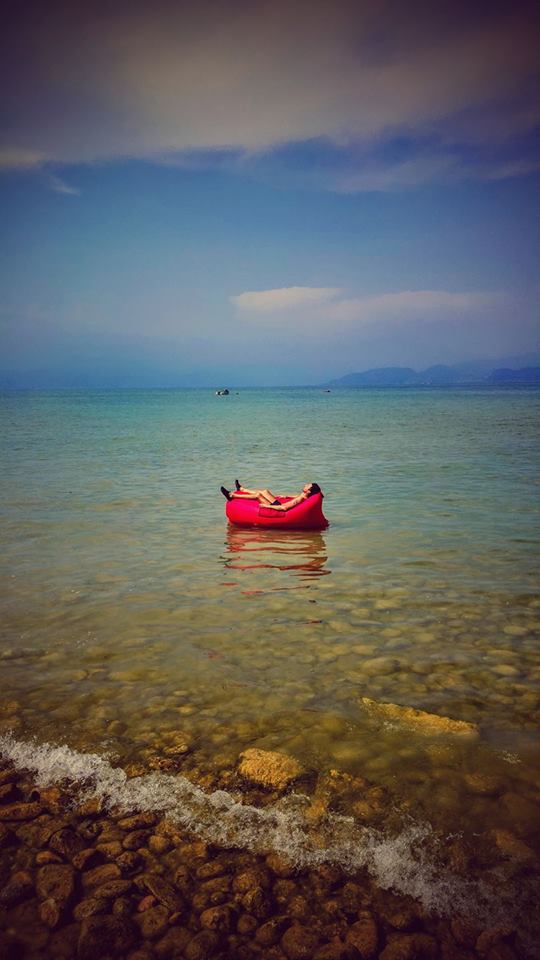
The great thing about these bags…they also float!
Goggles and a Waterproof GoPro
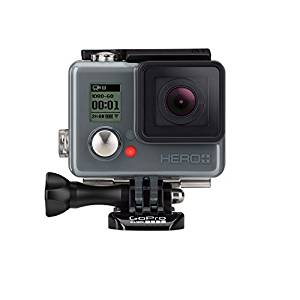
I have a real dislike for the water and refuse point blank to put my head underneath the water. I don’t care how beautiful a fish maybe I just can’t do it. It is a phobia I have had since a child and now if the slightest wave knocks me over I am out of the water quicker than the Flash can run towards danger.
Paul, however, is a real water baby. I often get so engrossed in a book I don’t even notice that he is back in the water either swimming miles out or looking at the life hidden beneath the waves.
For this reason, we never head off to the beach without a set of swimming goggles in one of our rucksack along with his waterproof GoPro. This way he can experience the glories of an underwater ecosystem up close and personal and then, thanks to the advances in modern technology, I get to see the striking images he has taken on his GoPro afterwards.
Family Fun Stuff
If you live anywhere near the coast you can easily explore a shoreline, beach or tidal river, where you are bound to discover and find a wonderful array of fascinating sea life in the intertidal zone.
The intertidal zone is the area of land that in covered by water at high tide and is then exposed at low tide. It can be divided into 3 main areas high, middle and low. Sea life that exists in the high tidal area has to be able to withstand the impact of the waves, keep themselves moist and also be able to avoid predators so they tend to be hardy marine creatures with hard shells like crabs, barnacles and limpets.
You can find a handy guide for interesting things to look out for in the intertidal zone below as well as 17 fun, educational activity ideas for children of all ages to enjoy.
Safety note: please remember that children should be supervised at all times around open water. Please also be aware of the health and safety rules and restrictions of any area you visit.
1. SEARCH FOR SEASHELLS
The easiest and most obvious things to find in the intertidal zone are seashells. Seashells come from marine invertebrates like molluscs which are animals without a backbone. Instead of a backbone they have a shell which forms an exoskeleton to support their bodies and protect them from predators. They build the shells when they are young using sea minerals like calcium, carbonate and salt. When the animal dies it leaves behind its shell which can often get washed up into the intertidal zone.
When you stop to look closely for seashells you might be surprised by the variety of species that you can find. The Marine Biological Association have a brilliant free guide to identifying seashells that you can download here to print off and take with you on your adventures. Don’t forget to look closely at the patterns and textures of the shells as well. Often shells that look very similar in shape size and colour have very different patterns which is a good way to work out the species. You can find some fun activity ideas using seashells below.
* You can find some fun sea shell potato print ideas at the bottom of the page.
2. GO ON A SEA SNAIL SAFARI
Sea snails can come in all sorts of shapes and sizes and you can normally find them clinging to rocks and other surfaces along the intertidal zone. You might be surprised to find that limpets are a type of sea snail along with periwinkles, whelks and top shells. How about going on a sea snail safari to see how many species you can spot. The Wildlife Trust have great photo guide to identifying sea snails here.
Limpets use their muscular foot (pictured below) to cling tightly to the rocks. They are mainly herbivores and they use a rasping tongue called a Radula (which is one of the worlds strongest biological structures) to scrape algae of the rocks to eat. Limpets sense vibrations if they sense danger they will suction themselves to the rock incredibly tightly in self defence.
3. MAKE A SEA SNAIL OBSERVATION BOX
Sea snails have a strong muscular foot which they use to crawl and climb around, they propel themselves forward using a combination of strong muscular wave like contractions and mucus. The mucus acts a lubricant reducing friction and also protecting them from rough and sharp terrain. This strong muscular foot also allows them to cling tightly to surfaces to protect themselves from predators and the elements.
You can observe a sea snails foot and the way it contacts and moves by making a simple snail observation box or window. All you need for this is a small recycled cardboard box and a firm sheet of recycled plastic. You can often use recycled food packaging for this,
First cut two windows into the back and front of the box. Then tape or glue the sheet of plastic packaging onto the front window. You need the plastic packaging to be firm and strong enough to safely hold a snails weight. It also needs to be clean and clear.
Finally find a sea snail and carefully and gently place it onto your observation box The children can then lie down and hold the box carefully up to look at the underside of the sea snail. If the slug seems to have securely attached itself to the plastic window you can also carefully tilt the box sideways to look at them from the side.
4. ENJOY CRABBING
There are more than 4,500 species of crabs in the world, 62 of which live in or around the waters of the UK. However you are most likely to only find the 5-8 most common varieties by the shore. There is great guide to identifying any crabs you find here. *You can also find some fun crab potato print ideas at the bottom of the page.
Like many crustaceans crabs shells are made chitin which is a hard wearing and tough substance. But you might be surprised to know that a crabs blood is actually blue because of the copper it contains. They also have 10 legs not 8 as many people believe. Crabs belong to a group of animals called Decapods which means 10 legs. Lobsters, shrimps, and prawns are also Decapods.
Crabbing is a great activity for children of all ages, they are fascinating creatures to find and there is always a lot of excitement when they scuttle about. You can either hunt for crabs by simply looking in rock pools or under rocks as the tide is going out. Or you can catch crabs in deeper water using a net, a crabbing line (make sure it doesn’t have a hook attached) and some bait. Leftover bacon or bacon rind is the best bait to use as most of the crabs in the UK are omnivorous meaning they eat both animal and plant matter. The best places for crabbing are often well known local spots along shorelines and tidal rivers. You can often can crab off pontoons, bridges, harbour walls, slipways or a jetty.
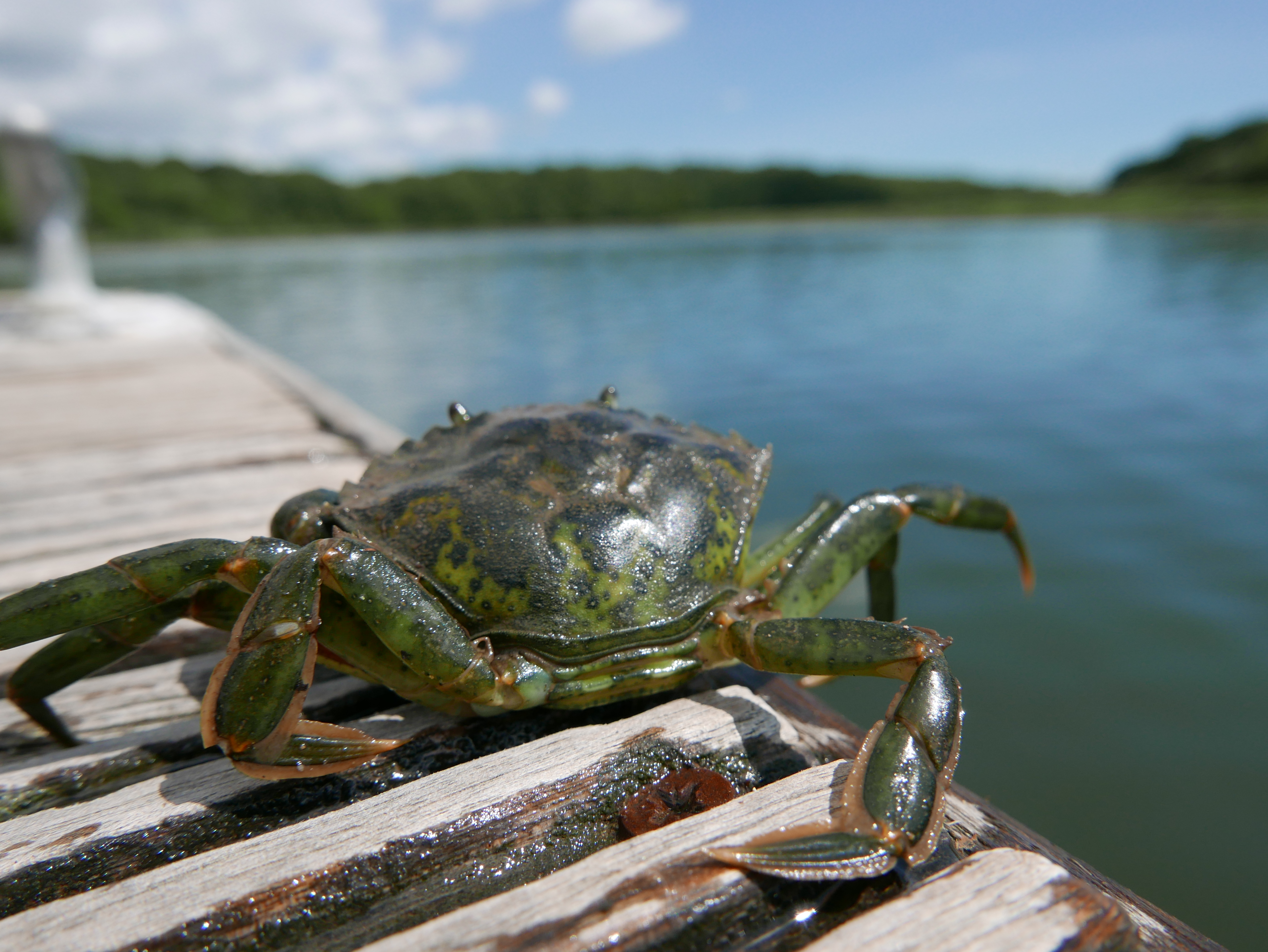
Please always handle crabs with care and let them go after a short while so they didn’t become too distressed (they blow bubbles when they are stressed). Crabs are often feisty and will pinch you in self defence, so if you want to pick one up its best to gently hold it either side of its shell or carefully pinch the back of crab in between too fingers so it doesn’t get hurt and it can’t hurt you. You can keep any of the crabs you catch in a bucket (filled with water from the location you are crabbing from) for a short while to observe. But remember to change the water or let them go every 10 mins or so, otherwise they won’t have enough air to breath. It’s also best not to overcrowd them as they will fight or become distressed if there are too many crabs together in a small space. You could also add in some seaweed or rocks to give them a bit of shelter to hide in.
5. Identify The Local Seaweed
There are over 600 species of seaweed in the UK which provide food and shelter to a variety of other marine and shore creatures that even the littlest of leaners can discover and learn about. All you need to do is download the Big Seaweed Search Guide
6. GO ROCK POOLING
Rock pools are a fantastic place to find a wide array of underwater sea life like goby fish, jelly fish, sea urchins, starfish and sea anemones Any sea anemones you find above the waterline may resemble jelly like blobs. This is because they have folded themselves inwards under a protective layer to shelter from the elements and would be predators.
When they are under water they unfurl their tentacles to catch food, the tentacles have stinging cells which allow them to paralyse prey. Sea anemones are one of the world’s slowest moving creatures, they mostly attach themselves to a surface and remain there. However they are also one of the longest living marine animals and have the ability to clone themselves.
If you get lucky you may even spot some jelly fish. The most common jellyfish to find on UK shores is the Moon jelly fish which mostly drifts with the currants feeding on plankton. You can identify them by the four circles on the under side of the dome, these circles are actually the reproductive organs. Did you know that jellyfish don’t have brains, hearts or blood and they are 95% made of water?
7. GO FOSSIL HUNTING
A fossil is the preserved remains, imprints or impression of a once living thing like as animal or plant. Did you know the word fossil comes from the Latin word ‘fossilis’ which meant “obtained by diggin” A good place to find small sea fossils is in flint. Flint forms in layers of chalk and is easy to find in the South of England and Essex, you will often find that most of the pebbles on beaches and gardens in these areas are made of flint. Chalk itself is formed from layers of mud and tiny sea creatures that have died and fallen to the ocean floor.
Over millions of years these layers of mud and sea creatures are compacted into chalk. As the chalk compacts it squeezes seawater containing silica (dissolved quartz) into any cavities, gaps or spaces around it forming nodules and layers of flint. Sometimes the flint nodules forms around a small sea creature or shellfish like a sponge (above) or sea urchin below), preserving them in the flint as a fossil.
8. MAKE NATURE ART
Nature art (also sometimes called land art) is a wonderful nature activity that encourages creativity and fine motor skills in children of all ages and abilities. All you need is some imagination and natural materials like pebbles from the shore to create pictures, shapes and patterns with.
Or if you are on a sandy beach you could simply draw and write in the sand, using your fingers or a stick to make patterns and pictures or practising writing skills. Or how about using a combination of materials and marks to make your art.
9. ROCK BALANCING
Rock balancing is also a great activity for developing fine motor skills, co-ordination and concentration. We find it really therapeutic and good for mindfulness. Simply find rocks of any shape or size and have fun balancing them on top of each other in towers pyramids or to make mini walls. It’s also great fun to knock them down again afterwards.
10. MAKE SHADOW CHARACTERS
Shadow characters are so easy and fun to make on a sunny day. Just draw some simple funny faces or expressions in the sand and then line your shadows up over them. You can then move about in different positions to bring your shadow characters to life. You could also take photos of all the different characters and scenarios you create.
11. SEARCH FOR ANCIENT SEA GLASS
Sea glass is glass that has been weathered an worn down by the sea, a process that can take anything from 20-200 years for the glass to become fully smoothed and frosted by the ocean. The sea glass can come from anything like broken bottles and other rubbish dumped in the ocean to glass windows and tableware from ancient shipwrecks. Safety note: please supervise children when collecting sea glass and make sure they don’t accidently pick up any sharp or newly broken glass.
You can often tell where a piece of sea glass may have come by it’s colour. The most common colours green, brown, white and clear normally come from alcoholic and non alcoholic drinks bottles. Lime green can come from1960’s soda bottles and forest green and soft blues are most likely to be from 19th centaury medicine, ink or soda bottles.
Jade and amber coloured sea glass are more uncommon and are likely to come from old whiskey, spirit and medicine bottles. Other uncommon colours include purple, cobalt and cornflower blues from Milk of magnesia, vicks vapour rub and poison bottles and opaque white which comes from early milk bottles, The rarest colours to find are grey, pink, red, yellow, teal and black. Black sea glass is glass that had iron slag added to it to increases it’s strength and protect liquids sensitive to light damage such as wines. spirits and medicines.
12. BUILD SANDCASTLES AND SAND SCULPTURES
Sandcastles are so simple to make for children of all ages. Simply fill a bucket or container with sand. Pat the sand down firmly and then turn the container over. Tap the bottoms and gently squeeze and tap until the sand comes away from the bucket or container to form a sand castle. Have fun decorating you sandcastles with any natural materials you can find like shells, stones, sticks and seaweed. Or simply enjoy knocking them down and building them back up again.
If you are feeling really adventurous you could try sculpting and shaping sand into different animals, figures, objects or patterns and shapes. You could also use found natural materials like shells, stones, sticks and seawards to give your sand sculptures extra details.
13. MAKE NATURE COLLAGES.
Making nature collages is a fun activity for children of all ages and abilities. It encourages creativity and helps develop fine motor skills. All you need is some paper or recycled cardboard, Firstly you need to draw or paint simple sea creature pictures onto the paper or cardboard. Next collect as many natural objects as you can find on the shore for your collage. You could use leaves, stones, seashells, driftwood, feathers or seaweed. Arrange the materials on top of your picture in any way you like. You could make a frame or a pattern on top of the picture or you could create a mini sea scape for your creatures to live in.
14. MAKE NATURE ART FRAMES
Nature art frames are really simple to make, fun to play with and create some wonderful images. You just need an old piece of cardboard a pen and some scissors. We hate to waste anything and recycling and reusing materials is one of many small things we can all do to help the environment. So instead of chucking used cardboard boxes we like to find ways to use them in crafts and activities.
All you need to make a nature frame is to draw a simple shape or picture like a fish onto cardboard. Your shape or picture should have at least 1- 2 easy to cut out sections that you can then look through. When you have cut out the see through sections of your frames, you can take them outside to hold them up against any of the interesting natural objects, textures, patterns and shapes you can see, like the water, shore, sky, trees, flowers and grass for example.
The picture you see or create with the frames changes as you move the paper around. Its fun to see all the beautiful patterns, shapes and colours of nature bring your pictures to life. You could even take photos of the nature frames as you go to capture the artwork and pictures they create.
15. LOOK FOR HEART SHAPED STONES
Heart shaped stones are often quite easy to find on stone and pebble beaches. You can give them as little love tokens to friends or family or keep them as mementos of your adventures. You could even write kind messages on them and hide them for others to find.
16. FIND ROCKS AND PEBBLES TO PAINT
We love finding painted pebbles and stones when we are out and about, it’s wonderful to see the creativity and love that people put into them. You can easily find pebbles to decorate yourself by looking in your garden, on a nature walk or along the shore. All you need then is some paint or permanent markers to paint or draw colourful designs onto the pebbles or turn them into animals like bees or food like strawberries.
Once you have finished painting your pebbles you could use them in pretend play, as games counters or hide them in your garden and have a treasure hunt. You could even join a local rock finding group where you show pictures of the rocks you have made and invite people to find them in a local park or a safe, easy to access place. Who knows how far your rocks may travel and the adventures they might have may have along the way. *Safety note please be aware of the choking hazard of pebbles with smaller children.
17. FIND SHELLS AND STONE WITH HOLES IN FOR CRAFTS
Stones and shells that have holes in them are great for making jewellery. You simply thread them onto string, ribbon or wool. (Which is another great activity for developing fine motor skills.) You could also tie a threaded string of shells and stones onto a forked branch/stick to make a stick rattle. This is great fun to play with as it makes a fantastic noise and you can use it in games or as a musical instrument.
Or how about tying strings of threaded shells and stones onto a stick to make a mobile. You could even make a Rainbow stick mobile by painting 6-7 sticks in the colours of the rainbow. When they are dry you then tie them together using a piece of string, ribbon or wool and then you hang your strings of seashells underneath to look like raindrops.
10 most incredible marine life experiences
Top photographers and experts reveal their most incredible underwater encounters
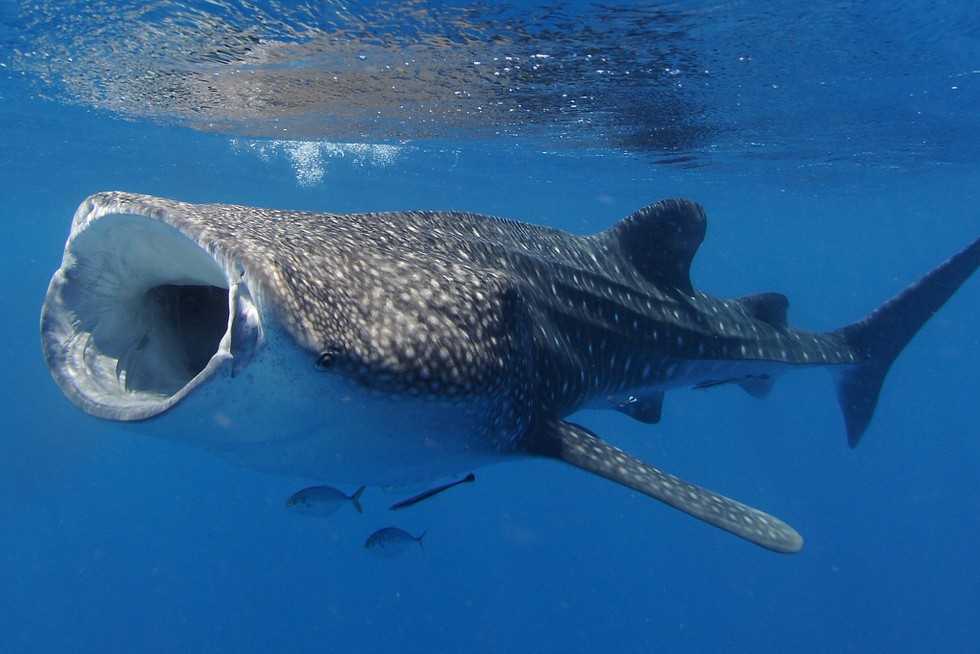
Where to see whale sharks: Western Australia
The expert: Brad Norman is a marine biologist who has been studying whale sharks at Ningaloo Reef since 1994.
“Jumping off a boat into crystal-blue oceanic water 50m deep is thrilling enough, but knowing that you’re plunging into the path of the world’s biggest shark – up to perhaps 15m long – really sends your heart into overdrive.
At least 10,000 tourists do this every year at Ningaloo Reef, Western Australia, which is a World Heritage site.
There are more than 20 locations worldwide where you can swim with whale sharks, but Ningaloo is perhaps the best site of all; it’s certainly the most famous.
I often relive my first time: as I snorkel languidly at the surface, a creature as big as a bus powers towards me. The shark slides effortlessly past, seemingly unconcerned by my presence.
A giant shark, I say to myself, is within 5m of me – and there is no cage between us. Marine encounters truly don’t get much better.”
Top tip
When you enter the water and first see the shark, swim out to the side and stay at least 5m away. Try not to splash.
Where to see hammerhead sharks: Red Sea, Sudan
The expert: Jeremy Stafford-Deitsch is a photographer and the author of three books on sharks.
“Beyond the reef, out in the current, the hammerheads gather in schools. They are most likely to be seen on an early morning dive, but here, off Sanganeb Atoll in the Sudanese Red Sea, you must wait for them to come to you.
I plunge through the thermocline and down to the colder water that the hammerheads prefer. The current is strong, so I work against it with biting fin strokes while controlling my breathing.
I gaze into the crepuscular emptiness then clang my knife against my air tank a few times. The shimmer of a distant ghost appears through the haze; then several others materialise, followed by many more solidifying forms.
A school of scalloped hammerhead sharks populates the liquid half-light, their beautifully ugly, flattened heads jerking from side to side.
In a few thrilling seconds, their primitive curiosity is satisfied – I am inedible – and they turn as one to return to a gloom I cannot enter.”
Top tip
Wherever you go, expert local knowledge is vital, as are good diving skills.
Where to see sealions: Galápagos islands, Ecuador
The expert: Tui De Roy is a wildlife photographer and author who spent 40 years living in the Galápagos and still returns there frequently.
“From the moment I hit the water, I know the tables are turned. I thought I was going to be the observer – but I quickly realise that all eyes are on me, and the curious young sealions are eager to engage in rambunctious play.
These underwater aerialists put on quite a show, transforming this undersea realm into a veritable circus. They are full of confidence, reassured by their strength in numbers and bursting with energy, still nourished by their mothers’ milk.
More like this

Best books on marine and coastal wildlife
The sealions dart, spin, turn, loop and leap, while blowing bubbles and chasing each other in tight circles.
They egg each other on – some come closer and closer, heading straight for my mask, then veer away adroitly at the last moment, constantly watching my reactions.
Their greatest joy – and mine – comes when I try to imitate them by turning somersaults of my own. My clumsy antics drive them wild, and they circle me in ever-tighter loops.
Their agility makes me feel like a floundering cow, and I nearly drown in my own laughter as I fail miserably to keep up.”
Top tip
Engage the sealions’ curiosity by copying their movements or swimming in short bursts then stopping. Trying to get too close will only put them off.
Where to see orcas: Norway
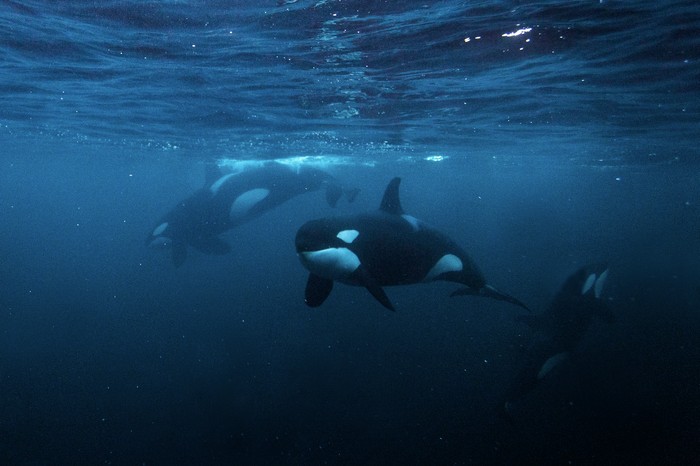
Orcas underwater in Norway. © Mike Korostelev/Getty
The expert: Zoologist and BBC Wildlife columnist Mark Carwardine is never happier than when swimming with a top marine predator.
“Tysfjord is Norway at its deepest, narrowest and moodiest. Winter daylight is in short supply, and the air is very, very cold. We head out to sea in a small boat, and I’m ready for action, dressed in a drysuit, mask and snorkel.
I keep an eye out for the familiar dark dorsal fins of the world’s apex marine predators – orcas.
Once we’ve spotted a pod, we try to get ahead of it and then jump into the water so that the animals swim right past us. There’s no guarantee that it will work, but I plunge into the frigid fjord anyway and wait.
Staring into its cold, dark depths, I am suddenly engulfed by a huge school of herring. A moment later, I feel a swishing movement and turn to see an adult female orca disappearing into the murk in hot pursuit. For the brief moment she’s in my field of view, the killer whale appears much bigger than she did from the sanctuary of the boat.
Moments later the entire pod surrounds me, stunning fish with slaps of their powerful tails before picking off their prey, one by one. I am floating right in the middle of their meal.”
Top tip
Don’t try to chase after the orcas – just lie still on the surface and watch.
Where to see humpback whales: Tonga
The expert: Sue Flood is a wildlife photographer and film-maker who specialises in polar and marine environments and species.
“In the crystal-clear waters of the South Pacific, off the coast of the Vava’u Archipelago in the Kingdom of Tonga, we watch a female humpback whale apparently dozing near the surface. Her young calf, just a few weeks old, is nearby, and the mother lazily opens one eye to take a better look at us.
Satisfied that we pose no threat to her or her precious offspring, she drifts back to sleep, allowing us so close that we can see the wrinkled skin around their eyes and even the tiny whale lice clustered in folds in their bodies.
At this point my husband, wildlife cameraman Doug Allan, and I have been filming the humpbacks for nearly 10 weeks for the BBC series Planet Earth.
We have been swimming with this pair many times; perhaps that’s why mum is so relaxed in our presence. Then again, every year hundreds of people swim with the whales here, so they probably know by now that they have nothing to fear.
I’ve been fortunate enough to have enjoyed some amazing encounters with marine mammals in my 25-year career, but nothing beats this. At one point, mum swims close and looks me in the eye – a heart-stopping moment that will stay with me forever.”
Top tip
When swimming with humpback whales, move very slowly and gently, and let them come to you.
You may also like:
Where to see green turtles: Barbados
The expert: Charlie Hamilton James is a wildlife photographer, cameraman and TV presenter.
“Tumbling over the side of the boat into the warm waters of the Caribbean, I look around. Immediately some dark shapes below start moving my way. As they get closer, they resolve into a group of green turtles.
They come right up to inspect me, and I fall in love with them on the spot. They’re so graceful in the water, a complete contrast to their lumbering movements on land.
Local operators have been feeding them strips of fish for years, and the turtles no doubt think I’ve got my own secret stash. I spend half an hour in the water with them, during which I’m even graced with the company of a couple of hawksbills as well. I return here almost daily for three weeks.
Research by the Barbados Sea Turtle Project (BSTP) suggests that the turtles are passing through these waters and suffer no ill effects from human contact. So you can enjoy a magical encounter with a clear conscience.”
Top tip
Never attempt to chase, grab or feed the turtles – they are easily stressed.
Where to see manta rays: Maldives
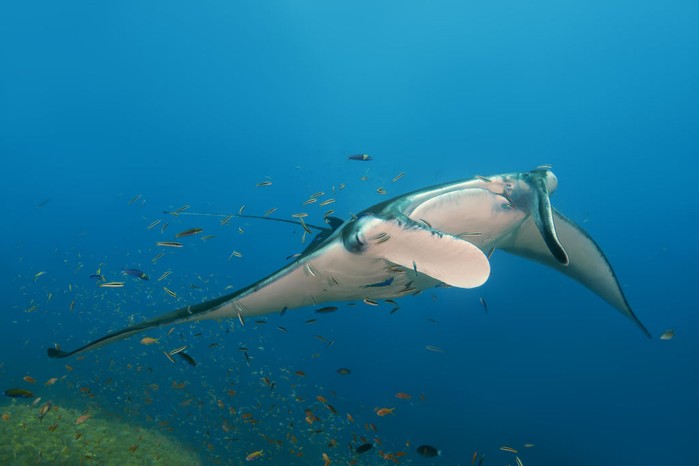
Giant oceanic manta ray swimming in the Maldives, Indian Ocean. © Andrey Nekrasov/Barcroft Images/Getty
The expert: Reinhard Dirscherl is an experienced diver and specialises in marine and travel photography.
“As the cry of “Manta! Manta!” rings out over the vermilion blue waves of South Ari Atoll, I prepare to dive. Just 15m below the surface hundreds of cleaner wrasse surround a small coral block.
Three manta rays soon join them at their cleaning station. They circle around, each time approaching within a few metres of me.
It’s unnerving to see these massive creatures, their mouths wide open as they feed on the plankton-rich waters, coming towards you at speed. But I know that I have nothing to fear: they are truly gentle giants.”
Top tip
Manta rays congregate at cleaning stations – so wait at one, too
Where to see basking sharks: UK
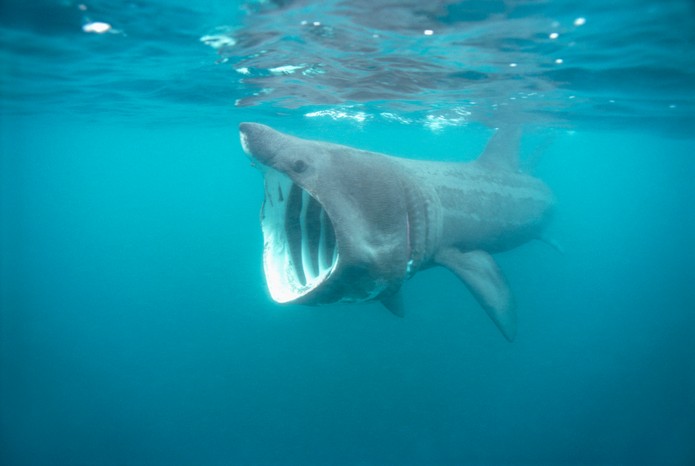
A basking shark sieves microscopic zooplankton through its cavernous mouth. © Corbis/VCG/Getty
The expert: TV presenter and BBC Wildlife columnist Nick Baker loves swimming with sharks, from great whites to dogfish.
“It’s strange meeting a basking shark. Even though I know that its immense bulk is fuelled entirely by tiny crustaceans, I’m still nervously chewing the little rubber blocks off my snorkel.
But it’s hard to stay cool as a vast, pale maw the size of an inglenook fireplace comes hurtling towards you, gills billowing like satin sheets in the wind, seemingly engulfing the entire ocean as it moves.
This is my first encounter with this mighty fish and what makes it so much sweeter is that I’m bobbing around in the water off the Lizard Peninsula in Cornwall. It’s amazing what you can find off our coasts.
Top tip
If you want to get close to basking sharks, position yourself ahead of them and hang in the water like a jellyfish.
Where to see stingrays: Cayman Islands
The expert: environmental journalist and former BBC Wildlife staff member James Fair visited the Cayman Islands in 2006.
“With a chunk of squid grasped in my right fist, I dive beneath the surface of North Sound and offer it to the creature on the sandbar at my feet.
The stingray locates the prize and then there’s a strange rasping sensation as it hoovers up the treat.
I look around: stingrays with 1m wingspans litter the seafloor, moving towards me like a group of alien life forms from Doctor Who. I’m going to need a lot more squid.”
Top tip
Whenever you feed a stingray, make sure you keep your thumb tucked in to avoid it being sucked into the fish’s mouth.
Where to see manatees: Florida, USA
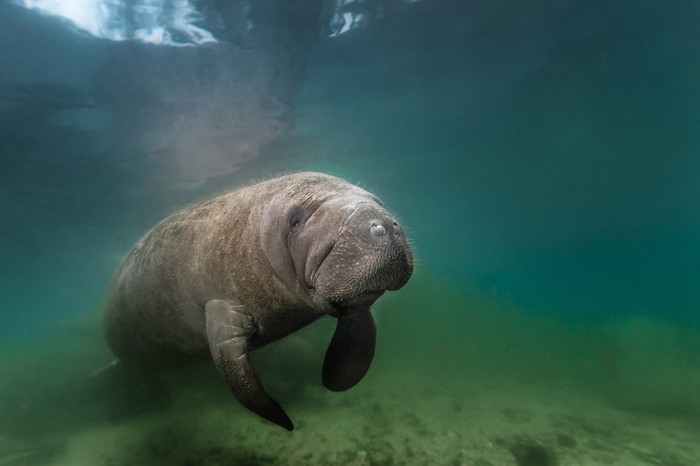
Florida manatees head inland to Florida’s warm springs during the winter months. © Shutterstock
The expert: Alexander Mustard is a marine biologist who has worked as a professional underwater photographer since 2004.
“Mist hangs over the dark waters and I am pleased to see the first rays of sunlight stretching across Three Sisters Spring. It’s dawn, and I’m right on time. In Florida, the early snorkeller catches the manatee.
During winter, these animals seek out the warm waters here to keep them toasty while they sleep. On particularly cold nights, the springs fill up like dormitories and if you arrive early you can expect quite a reception.
There is no need to keep your distance – the manatees actively seek you out. Life for them is an itchy business, and there is nothing they like more than a good ol’ scratch. And they know just where to get one.
A manatee will swim right up to you, turn on its side or back and rub its flippers on its belly, leaving little doubt as to what it wants you to do. And if you perform a satisfactory service, one individual may bond with you all morning, returning to you again and again.”
Top tip
The less you move in the water, the more manatees will be attracted to you.


